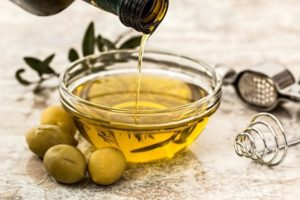The Controversial DREAM Study: Where Are We Now?
Posted by EyePromise on Jul 18th 2019
Last year, the Dry Eye Assessment and Management study, referred to as the DREAM study, was released. Many of the headlines said that Omega-3s do not benefit occasional dry eye. While this caused some eye care professionals to question the power of fish oil, others pushed back. Jane Cole, the contributing editor for Review of Optometry, shared a piece where several experts expressed their thoughts about the controversial findings.
What is the DREAM Study?
In May of 2018, a study was published in the New England Journal of Medicine which tested the validity of Omega-3s as a solution to occasional dry eye. Study participants had:
- Signs and symptoms of moderate-to-severe dry eye on 2 consecutive examinations performed 2 weeks apart
- Symptoms for at least 6 months
- An Ocular Surface Disease Index (OSDI) score from 25 to 80 at the screening visit and from 21 to 80 at baseline eligibility visit
- Used or wanted to use artificial tears at least twice daily in the previous two weeks
- At least 2 of the following 4 signs of dry eye in the same eye at screening and baseline visits:
- Conjunctival staining score ≥1
- Corneal fluorescein staining score ≥1
- Tear break-up time (TBUT) ≤7
- Schirmer’s test with anesthesia ≥1mm and ≤7mm in 5 minutes
Patients were told to continue their current methodologies for relieving discomfort throughout the study to keep it “real-world.” The placebo used was refined olive oil, and the results showed no statistically significant benefits of the test group versus the placebo.
Controversy Erupts
These results led to headlines that read “Adding Omega-3s Has No Effect On Dry Eye Disease.” ODs who were skeptical about Omega-3s used the DREAM study to justify why they wouldn’t prescribe fish oil to future patients. Penny Asbell, MD, a principal investigator in the DREAM study, said that some people believe that simply seeing patients more often might be enough to subjectively relieve their symptoms. “Just seeing them [4 times a year] seemed to make everybody feel better.”
Other ECPs Disagree
While some eye care professionals used the finding to dismiss Omega-3s, others stressed the need to look beyond the headlines. Paul Karpecki, OD in Lexington, KY, points out that the Omega-3 group still had a positive response.
“The fish oil treatment arm had a phenomenal statistical improvement from baseline. So, fish oil does work, and it’s very effective.”
Jeffrey Anshel, OD in Encinitas, CA, warns fellow practitioners to take the results with a grain of salt. “The protocol of a study must cover many bases and not be influenced by flaws in the design of the study. Also, no one study should represent the gold standard for treatment in any disease.”
Study Design Flaws
Like Dr. Anshel, many believe that the design of the DREAM study was flawed. Doctors scrutinize the inclusion criteria for being too wide, leaving room for variation and inconclusive findings. But most of the controversy comes from the choice of placebo and the decision to make it a “real-world” study.
The Placebo Problem
There’s a concern that the choice of olive oil as a placebo could have corrupted the data. Olive oil contains phytochemicals that have proven health benefits, or “therapeutic effect.” DREAM study authors push back on this concept. Not only was the olive oil refined to remove any “therapeutic” phytochemicals, but the amount given to each patient was less than that used for salads.
A “Real-World” Issue
Another decision that came under fire was the choice to make the study “real-world.” Researchers shared that the clinical trial was considered “real-world” because “Patients were allowed to continue their current treatments for dry eye disease, which is not the case in most industry-sponsored trials of treatments for this disease.” This choice sparked criticism because it’s not a “clean” identification of which solution is helping or not helping patients.
Debate Leads to DREAM Extension
The same researchers who worked on the DREAM study conducted and presented a follow-up study at ARVO 2019. This new DREAM Extension tested patients who continued taking Omega-3s for a year vs. those who stopped. Results showed no significant difference in outcomes between the two patient groups, supporting the original findings.
What Now?
While these results are shocking to fish oil supporters, Whitney Hauser, OD at the Southern College of Optometry in Memphis, thinks the study opens a window for communication. “The study offers an opportunity to talk to patients about their whole-food nutrition, which is a conversation many doctors do not have…The DREAM study opened a dialogue about nutrition and supplementation in dry eye. I don’t think it’s the end of the conversation but rather the beginning.”
A Proven Solution
Nutraceuticals still play a vital role in relieving occasional dry eye. EyePromise® EZ Tears™ brings patients relief in 30 days guaranteed or their money back. Validated by clinical results and loved by patients, EZ Tears is more than Omega-3s. It is formulated with 8 soothing ingredients including gamma-linolenic acid (GLA), an omega not found in fish, flax, or the average diet. EyePromise EZ Tears provides the total nutrition needed to help relieve occasional dry eye. Read the clinical trial behind the efficacy of EyePromise EZ Tears.
